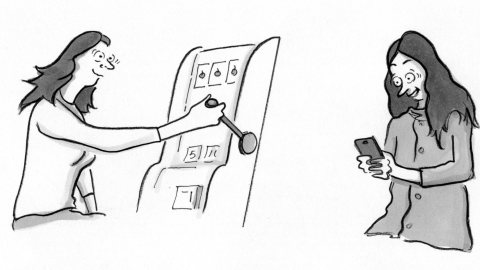The Dark Arts of Attentional Design

We must pay more attention to the opposite of attention deficit disorder (A.D.D.).
1. Our “age of distraction” also features excessive focus problems. In addition to A.D.D., “attention captivation disorders” are going viral.
2. Junk attention is a “mental equivalent of obesity,” says Matthew Crawford. He fears a “creeping saturation of life with hyperpalatable stimuli,” as companies engineer experiences that only a “freak of self-control” could resist. They’re like junk food’s killer combo of sugar + fat + salt orchestrations.
3. For example, casinos use science to manipulate our “cognitive architecture” and emotional drives to maximize “time-on-device.” Crawford cites examples from MIT anthropologist Natasha Schüll’s Addiction by Design, e.g., wearing dark clothes to hide in situ urination.
4. Many players seek not winning, but tranquilizing “machine zone” patterns: “If you can’t rely on the machine, you might as well be in the [unpredictable] human world” (+see Videogames = Powerful Emotech).
5. Those comforting patterns arise from letting your emotions and “intuitions be manipulated” — software tunes reinforcement stimuli to keep you zoned out, in delightful industry jargon, “playing to extinction.”
6. These “dark arts of attentional design” interact negatively with normal, not only atypical, psychology; addicted-help-seekers typically had 10-year-habits; now they’re 35-year-old women with 2-year-habits (+two children in casino child-care). This high-volume, low-roller, “Costco model of gambling,” is highly profitable.
7. Engineered obsessions have spread far beyond gambling —> ”hopelessly hooked” smartphone-checking 221 times a day on average (every 4.3 waking minutes), reports Jacob Weisberg.
8. To orchestrate people’s attention in hard-to-escape ways, technologists use “slot machine psychology” and “captology” (CAPT = “computers as persuasive technology) —> using the science of “human vulnerabilities … to engineer compulsion.”
9. Engineers pair habit-forming “hot triggers” with distinctive, repetitive movements (e.g., Tinder swipes). Creating “ludic loops” that exert “mind control the Candy Crushway.”
10. Weisberg sees analogies with the tobacco industry’s tweaking of “nicotine levels.” Facing powerful and profitable manipulations, he fears “we can’t defend ourselves against the disciples of captology by asking nicely for less enticing” products.
11. These “elaborate private-sector strategies to milk the clientele for greater yield,” are good examples of behavioral economics (nudging) in action, says Tyler Cowen.
12. Here a free-market mindset offers “18th-century answers” to 21st-century challenges. Presuming autonomy and prudence uses unempirical and “unrealistic anthropology” (e.g., ~50 percent of U.S. adults are diabetic or prediabetic).
13. Public-sector applied psychology in the form of “libertarian paternalism,” is considered “autonomy threatening” when it uses implicit nudges. But don’t for-profit, hidden-brain nudges manipulate autonomy?
In this brave new world, old ideas aren’t a safe bet. We’re in a nudge war, where “coercive loop” capitalism seeks to “milk [you] for greater yield.”
—
Illustration by Julia Suits, The New Yorker Cartoonist & author of The Extraordinary Catalog of Peculiar Inventions





